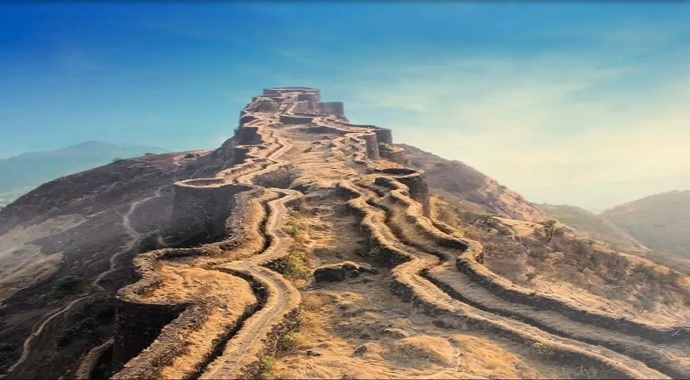In a remarkable decision taken at the 47th Session of the World Heritage Committee, India’s official nomination for 2024-25 cycle, ‘Maratha Military Landscapes of India’ got inscribed on the UNESCO World Heritage List, becoming India’s 44th property to receive this recognition. This global accolade celebrates India’s enduring cultural legacy, showcasing its diverse traditions of architectural brilliance, regional identity, and historical continuity.
Prime Minister Shri Narendra Modi, Minister of Culture Shri Gajendra Singh Shekhawat along with Chief Minister of Maharashtra Shri Devendra Fadnavis lauded the historic milestone and congratulated the people of India for this achievement.
A group of people in a meetingAI-generated content may be incorrect.
Maratha Military Landscapes of India
Spanning from the 17th to 19th centuries CE, this extraordinary network of twelve forts demonstrates the strategic military vision and architectural ingenuity of the Maratha Empire.
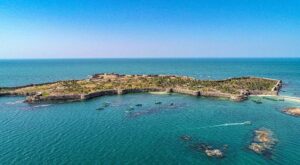
The proposal was sent to the consideration of World Heritage Committee in Jan 2024 and after a rigorous eighteen-month long process involving several technical meetings with the advisory bodies and visit of ICOMOS’s mission to review the sites, this historic decision was taken by the members of the World Heritage Committee today evening at UNESCO Headquarters, Paris.
Spread across the states of Maharashtra and Tamil Nadu, the selected sites, include Salher, Shivneri, Lohgad, Khanderi, Raigad, Rajgad, Pratapgad, Suvarnadurg, Panhala, Vijaydurg, and Sindhudurg in Maharashtra, along with Gingee Fort in Tamil Nadu.
 Raigad Fort
Raigad Fort
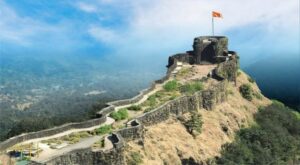 Pratapgad Fort
Pratapgad Fort
While Shivneri fort, Lohgad, Raigad, Suvarnadurg, Panhala fort, Vijaydurg, Sindhudurg and Gingee fort are protected under the Archaeological Survey of India whereas Salher fort, Rajgad, Khanderi fort and Pratapgarh are protected by the Directorate of Archaeology and Museums, Government of Maharashtra.
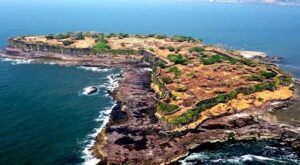 Suvarnadurg Fort
Suvarnadurg Fort
Located across a range of diverse terrains—from coastal outposts to hilltop strongholds – these forts reflect a sophisticated understanding of geography and strategic defence planning. Together, they form a cohesive military landscape that highlights the innovation and regional adaptation of fortification traditions in India.
Salher, Shivneri, Lohgad, Raigad, Rajgad, and Gingee are situated in hilly terrains and are therefore known as hill forts. Pratapgad, nestled within dense woods, is classified as a hill-forest fort. Panhala, located on a plateaued hill, is a hill-plateau fort. Vijaydurg, positioned along the shoreline, is a notable coastal fort, while Khanderi, Suvarnadurg, and Sindhudurg, surrounded by the sea, are recognized as island forts.
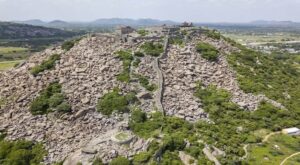 Gingee Fort
Gingee Fort
The inscription took place during 47th session of the World Heritage Committee in Paris, France, marking a significant milestone in the global acknowledgment of India’s rich and diverse cultural heritage.
A group of men sitting at a podiumAI-generated content may be incorrect.
During the Committee Meeting, 18 out of the 20 State Parties supported India’s proposal to get this important site inscribed in the list. The discussion on the proposal went on for 59 mins and after the positive recommendations by 18 State Parties, all the member states, UNESCO, World Heritage Centre, and Advisory Bodies of the UNESCO (ICOMOS, IUCN IUCN) congratulated the delegation of India for this momentous opportunity.
The Maratha Military Landscape of India was nominated under criteria (iv) and (vi), recognizing their exceptional testimony to a living cultural tradition, their architectural and technological significance, and their deep associations with historic events and traditions.
The purpose of including these heritage sites in UNESCO’s list is to preserve and promote shared heritage based on OUVs (Outstanding Universal Values) found in cultural, natural as well as mixed properties across 196 countries. On its part, India became a member of the World Heritage Committee from 2021-25.
This global recognition is a testimony to New India’s relentless pursuit of highlighting Bharat’s heritage on the world forum. This recognition underscores the efforts of the Archaeological Survey of India (ASI) and the Maharashtra government in preserving these historic treasures.
Last year, the Moidams of Charaideo, Assam were inscribed in the World Heritage List at the 46th Session of the World Heritage Committee held in New Delhi.
India ranks 6th globally and 2nd in Asia Pacific Region for the most number of World Heritage Sites. 196 nations have ratified the World Heritage Convention, 1972.
India also has 62 sites in the Tentative List of the World Heritage, which is a mandatory threshold for any site to be considered as a World Heritage property in future. Every year, each State Party may propose just one site for consideration of the World Heritage Committee for inscription to the World Heritage List.
On behalf of Government of India, Archaeological Survey of India is the nodal agency of all the World Heritage related matters in the country.



